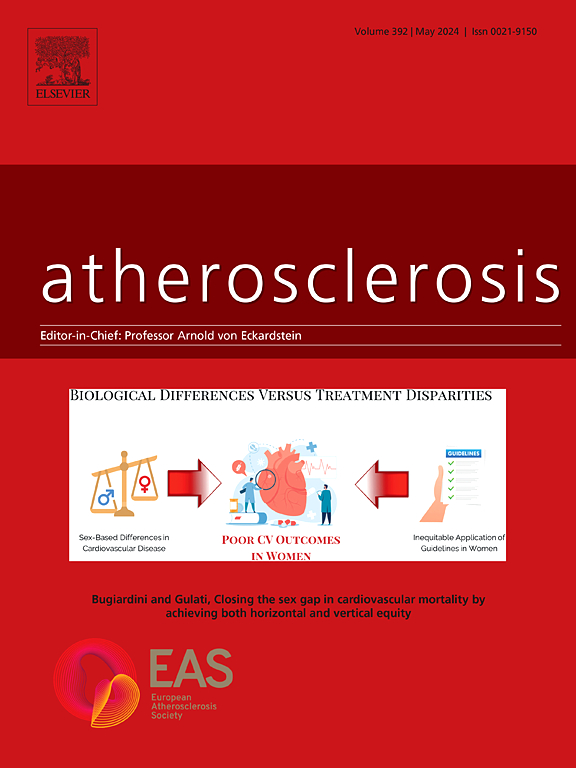Valine acts as an early biomarker and exacerbates pathological cardiac hypertrophy by impairing mitochondrial quality control
IF 4.9
2区 医学
Q1 CARDIAC & CARDIOVASCULAR SYSTEMS
引用次数: 0
Abstract
Objective
Pathological cardiac hypertrophy is an independent risk factor for heart failure (HF). Early identification and timely treatment are crucial for significantly delaying the progression of HF.
Methods
Targeted amino acid metabolomics and RNA sequencing (RNA-seq) were combined to explore the underlying mechanism. In vitro, H9c2 cells were stimulated with angiotensin II (Ang II) or were incubated with extra valine after Ang II stimulation. The branched chain alpha-ketoate dehydrogenase kinase (Bckdk) inhibitor 3,6-dichlorobenzo[b]thiophene-2-carboxylic acid (BT2) and rapamycin were utilized to confirm the role of the mammalian target of rapamycin complex 1 (mTORC1) signaling pathway in this process.
Results
A significant accumulation of valine was detected within hypertrophic hearts from spontaneously hypertensive rats (SHR). When branched chain amino acid (BCAA) degradation was increased by BT2, the most pronounced decrease was observed in the valine level (Δ = 0.185 μmol/g, p < 0.001), and cardiac hypertrophy was ameliorated. The role of imbalanced mitochondrial quality control (MQC), including the suppression of mitophagy and excessive mitochondrial fission, was revealed in myocardial hypertrophy. In vitro, high concentrations of valine exacerbated cardiomyocyte hypertrophy stimulated by Any II, resulting in the accumulation of impaired mitochondria and respiratory chain dysfunction. BT2, rapamycin, and mitochondrial division inhibitor 1 (Mdivi-1) all ameliorated MQC imbalance, mitochondrial damage and oxidative stress in hypertensive models with high valine concentration.
Conclusion
Valine exacerbated pathological cardiac hypertrophy by causing a MQC imbalance, probably as an early biomarker for cardiac hypertrophy under chronic hypertension.

缬氨酸作为早期生物标志物,通过损害线粒体质量控制而加剧病理性心肌肥大
目的病理性心肌肥厚是心衰(HF)的独立危险因素。早期发现和及时治疗对于显著延缓心衰的进展至关重要。方法采用靶向氨基酸代谢组学和RNA测序(RNA-seq)相结合的方法探讨其机制。在体外,用血管紧张素II (Ang II)刺激H9c2细胞,或在Ang II刺激后用额外的缬氨酸孵育。利用支链α -酮酸脱氢酶激酶(Bckdk)抑制剂3,6-二氯苯并[b]噻吩-2-羧酸(BT2)和雷帕霉素证实了哺乳动物靶雷帕霉素复合物1 (mTORC1)信号通路在这一过程中的作用。结果自发性高血压大鼠(SHR)肥厚性心脏内有显著的缬氨酸积累。当BT2增加支链氨基酸(BCAA)降解时,缬氨酸水平下降最为明显(Δ = 0.185 μmol/g, p <;0.001),心肌肥厚得到改善。揭示了线粒体质量控制不平衡(MQC)在心肌肥大中的作用,包括抑制线粒体自噬和线粒体过度分裂。在体外实验中,高浓度缬氨酸加重了由Any II刺激的心肌细胞肥大,导致受损线粒体的积累和呼吸链功能障碍。BT2、雷帕霉素和线粒体分裂抑制剂1 (Mdivi-1)均可改善高缬氨酸浓度高血压模型的MQC失衡、线粒体损伤和氧化应激。结论缬氨酸通过引起MQC失衡加重病理性心肌肥厚,可能是慢性高血压患者心肌肥厚的早期生物标志物。
本文章由计算机程序翻译,如有差异,请以英文原文为准。
求助全文
约1分钟内获得全文
求助全文
来源期刊

Atherosclerosis
医学-外周血管病
CiteScore
9.80
自引率
3.80%
发文量
1269
审稿时长
36 days
期刊介绍:
Atherosclerosis has an open access mirror journal Atherosclerosis: X, sharing the same aims and scope, editorial team, submission system and rigorous peer review.
Atherosclerosis brings together, from all sources, papers concerned with investigation on atherosclerosis, its risk factors and clinical manifestations. Atherosclerosis covers basic and translational, clinical and population research approaches to arterial and vascular biology and disease, as well as their risk factors including: disturbances of lipid and lipoprotein metabolism, diabetes and hypertension, thrombosis, and inflammation. The Editors are interested in original or review papers dealing with the pathogenesis, environmental, genetic and epigenetic basis, diagnosis or treatment of atherosclerosis and related diseases as well as their risk factors.
 求助内容:
求助内容: 应助结果提醒方式:
应助结果提醒方式:


